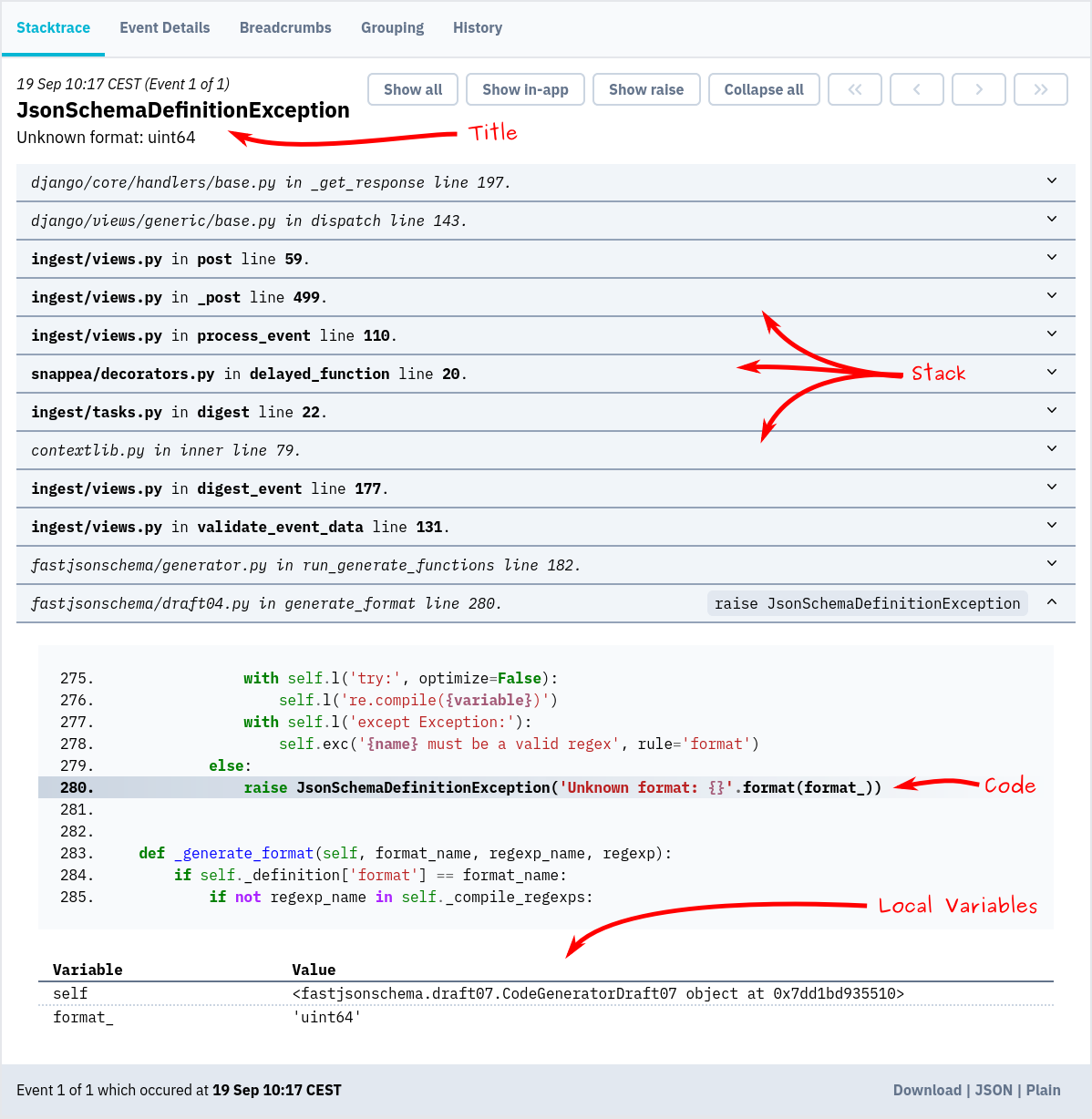Replace Sentry, Save 80%
Self-hosted error tracking. Millions of events per day. No per-event billing.
Why Bugsink?
- Save thousands per month at high volume
- Works with existing Sentry SDKs
- Install in 30 seconds
- Support from the developer (optional)
- Predictable infra cost, no surprise bills

What is Bugsink?
Bugsink is a self-hosted error tracker that captures, groups, and triages exceptions using the same SDKs as Sentry. You run it on your own infrastructure and stay in control — no usage-based pricing, no third-party data processing, and no surprise bills during incident spikes.

Why switch?
Sentry gets expensive quickly. Even under ideal conditions — annual billing, everything prepaid — pricing scales linearly with errors. Here’s an overview of the monthly cost of Sentry vs. Bugsink for a few different daily volumes:
That’s just the baseline. Unlike Sentry, Bugsink doesn’t change behavior when load increases. With Bugsink, there’s no throttling when traffic spikes, no event sampling that hides issues, and no unpredictable billing — even during major incidents. You keep full visibility, no matter how noisy things get.
Here’s a longer article on how the costs of Bugsink and Sentry compare.
Can it scale?
Yes — and that’s the point.
Bugsink handles 1.5 million events per day on a €5/month VPS (2 vCPUs, 4GB RAM). No special infra needed — just enough disk and a stable setup.
That kind of headroom matters during deploy failures or outages. You don’t want to worry about your error tracker when production breaks.
Retention is automatic. Bugsink keeps the most relevant events — based on issue frequency and age — and discards the rest. No quotas, no hard expiry.
See detailed performance numbers →
Need Support?
Many teams run Bugsink without any support. But if you’re in production, under load, or just want backup, we offer:
- Direct help with install, upgrades, or scale planning
- Fast replies by email or chat — no ticket queues
- Pricing that starts at €15/user/month
It’s support that makes self-hosting feel a bit more like SaaS — just one that lives on your own machine.
Learn more about our options for premium support and enterprise support.
Ready to switch?
The quickest way to evaluate Bugsink is to spin up a throw-away instance using Docker:
docker pull bugsink/bugsink:latest
docker run \
-e SECRET_KEY=Gym8d7HjgHSL0JF7aQmkGXSVlJHwcIbqyscpqVBBU2TV2NXIOQ \
-e CREATE_SUPERUSER=admin:admin \
-e PORT=8000 \
-p 8000:8000 \
bugsink/bugsink
Visit http://localhost:8000/, where you’ll see a login screen. The default username and password
are admin.
Now, you can set up your first project and start tracking errors.
You can also read the docs to learn more about Bugsink, or check out the code on GitHub.
